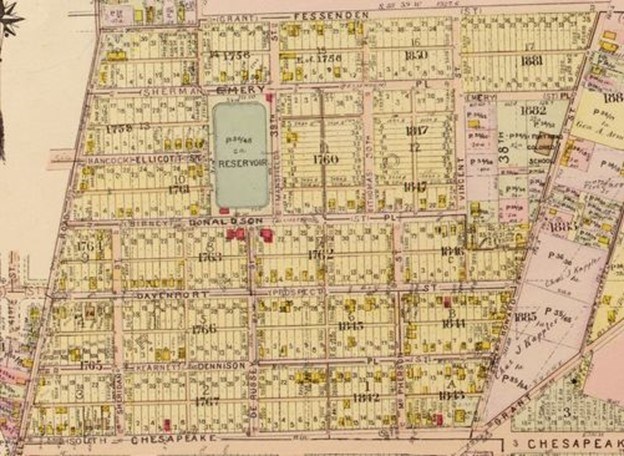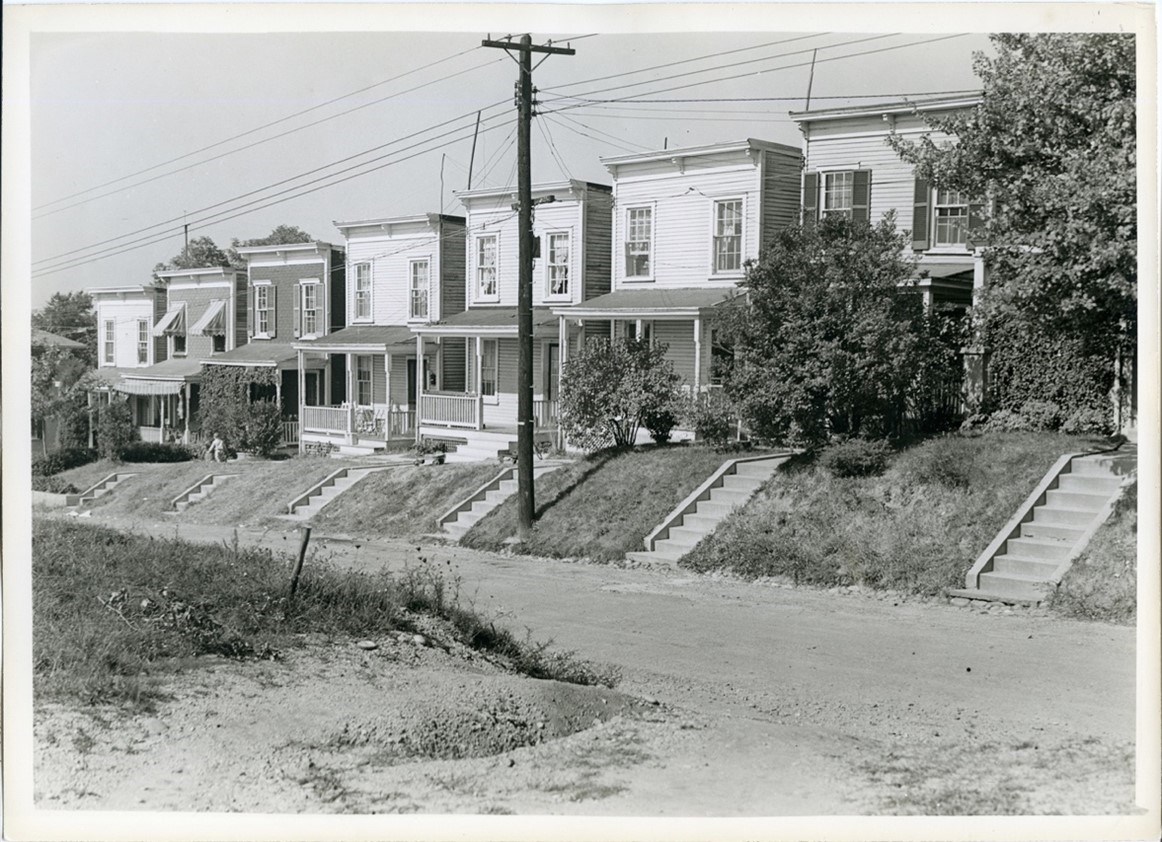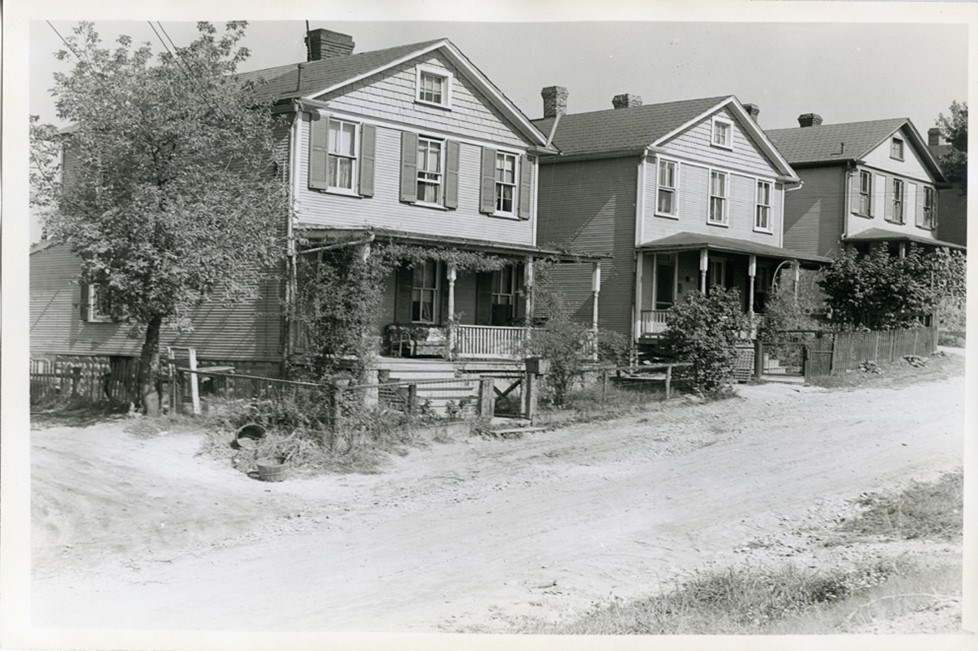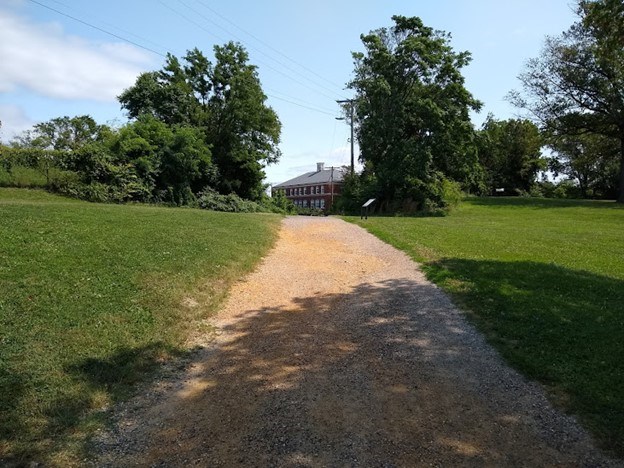Last updated: January 30, 2022
Article
Fort Reno Park- A Brief History of Reno City
Today, Washington, D.C.’s Fort Reno Park is known for its ball fields, distinctive water towers, and long-running concert series. But for many years, from the last decades of the 19th century into the middle of the 20th century, what is today parkland was home to a vibrant, working-class community of men, women, and children who made their homes “on the fort.” The Union Army had seized the land on which the Fort Reno neighborhood took shape during the early days of the Civil War, and once the war concluded the area was subdivided, christened “Reno City,” and sold. In the last decades of the 1800s, Black Americans began renting and purchasing land in the subdivision, which came to be known as Fort Reno or just Reno, the names its residents preferred. The neighborhood was bounded by Fessenden Street NW to the north, Howard Street NW to the east, Chesapeake Street NW to the south, and Belt Road NW to the west, to use these roads’ twentieth-century names. By the turn of the century, Reno had emerged as a center of Black life in the far northwest corner of the District. Some of Reno’s Black residents had been born enslaved, and many had taken part in the Civil War era; one Reno resident, Nelson Vale, claimed to have accompanied William Tecumseh Sherman’s army during its March to the Sea in late 1864.

Library of Congress
The first decades of the 1900s witnessed Reno’s heyday, as the neighborhood boasted multiple Black churches, civil-society organizations, a school – the still standing Jesse Lee Reno School, opened in 1903 – and a Black baseball team, the Fort Renos. By the early 1910s, Reno residents had created the Reno Citizens’ Association (RCA) to handle matters of local importance and lobby city and District officials on national issues. At the RCA’s monthly meetings, Reno residents worked to improve neighborhood infrastructure, hosted educational lectures, and fought for social justice, protesting, for instance, segregation on District streetcars and the showing of the virulently racist film Birth of a Nation in District theaters. Most Reno dwellers worked blue-collar jobs. Many men toiled as day laborers, janitors, or chauffeurs, and many women worked as domestics or laundresses in the homes of nearby white families. Some, however, secured positions in the federal government.
Fort Reno was never an all-Black neighborhood; Black residents outnumbered white residents, but Black and white families lived side by side on many of the subdivision’s streets, and some former residents reported harmonious relations between Black and white people living on the fort. Nor was membership in the Fort Reno community limited to those who lived within the boundaries of the subdivision. Men and women living outside “Reno proper” attended Reno’s Rock Creek Baptist Church, St. George’s Episcopal Mission, and Reno’s other houses of worship, and they played prominent roles in the RCA. In the early decades of the twentieth century, members of the Reno community socialized at dances held by the Brothers and Sisters of Moses Lodge, attended night classes at the Reno School, and spearheaded a community garden movement, all while they weathered the segregation, disenfranchisement, and economic inequality that characterized Washington, D.C. during that era. Fort Reno was, to use the words of two longtime community members, Thornton Lewis and Samuel Hebron, a community of “law-abiding citizens, working men, well thought of” who sought “to live a higher and nobler life.

NPS
Although relations between Black and white Reno-dwellers appear to have been fairly amicable, the white communities that grew up around Fort Reno as the 19th century increased and the 20th century dawned had disdain for the interracial, working-class community in their midst. Local white-run citizens’ associations representing Tenleytown, Chevy Chase, and Cleveland Park pushed for the federal government to acquire Reno and turn the neighborhood into parkland and schools for white children. Their effort to ethnically cleanse this northwest corner of Washington aligned well with the designs of federal officials and appointees seeking to implement the McMillan Plan, a turn-of-the-century report that recommended the building of monuments, parks, and roads in around Washington. Aided by the efforts of local real estate companies that sought to profit from Reno’s demise, the citizens’ association eventually won over District and federal officials and secured the passage of legislation authorizing funds for Reno’s acquisition and conversion.
Reno dwellers fought their neighborhood’s destruction, initiating legal action, protesting at multiple Congressional committee hearings, and enlisting the aid of local NAACP officials in their fight. In 1927, at a Congressional hearing, Samuel Hebron stood up to Ulysses S. Grant III, who was attending as the representative of the National Capital Parks and Planning Commission, the organization responsible for acquiring much of Reno during the 1930s and 1940s. Hebron boldly told the former president’s grandson that he “did not think they ought to come on the fort and run us people off who are trying to build respectable homes, and I feel that it is unjust and un-American.” The efforts of Hebron and his fellow Reno-dwellers staved off Reno’s destruction for several years, buying time in which Reno residents could enjoy the homes they had worked so hard to build and plan for their forced relocations. Despite this temporary victory, Reno residents ejected from their homes had a difficult time finding new housing, as they sold at artificially low prices under threat of condemnation and were therefore unable to purchase new homes comparable to the ones that had been stolen from them. The Reno School shut down in 1950, having served fewer than ten students in its final years, an institutional acknowledgment that the conspiracy of federal and District officials, local civic groups, and real estate agents had succeeded in its quest to destroy the Fort Reno neighborhood.

NPS
That neighborhood is gone, but its memory lives on. Former residents met in Fort Reno Park for a “homecoming” every year into the 1980s, and historical research into the community has illuminated much about the lives of the men, women, and children who lived in Fort Reno: the homes they built, the jobs they worked, the associations they joined, the causes they supported, and the fight they waged to keep their homes.
Today, Fort Reno Park provides residents of nearby neighborhoods with space for recreation and beneficial public programs, but this all came at a price. As researcher Irina Cortez stated in 2003, in a study prepared for Rock Creek Park, “Tenleytown acquired a beautiful new park and new schools, but the cost of all of this was the destruction of an entire community of people with hopes and dreams for themselves and their children. There is no way of knowing what information and history was lost with the demolition of the subdivision. The people who left Reno took their heritage with them and probably struggled to hold on to it in a world that must have seemed terribly unjust. Their world—a legacy of nearly 70 years—was destroyed within the span of a score of years and the government not only allowed it, but also actively participated in it.” No amount of historical scholarship or interpretation can undo the damage wrought by the destruction of Fort Reno, but engagement with the history of the neighborhood “on the fort” can foster productive present-day conversations about race, place, and space.

Brian Taylor
